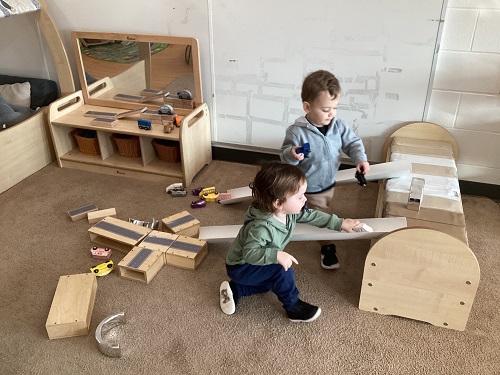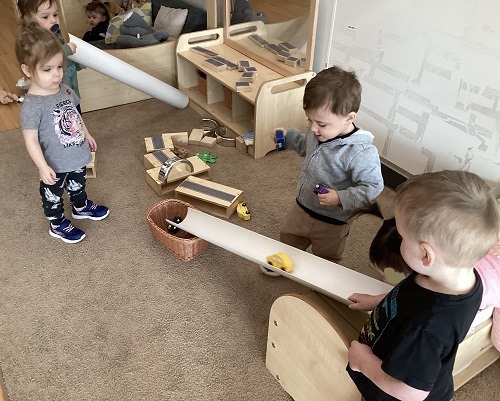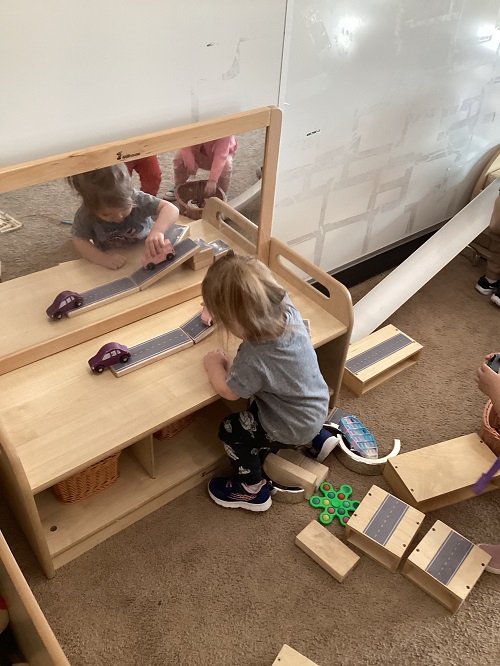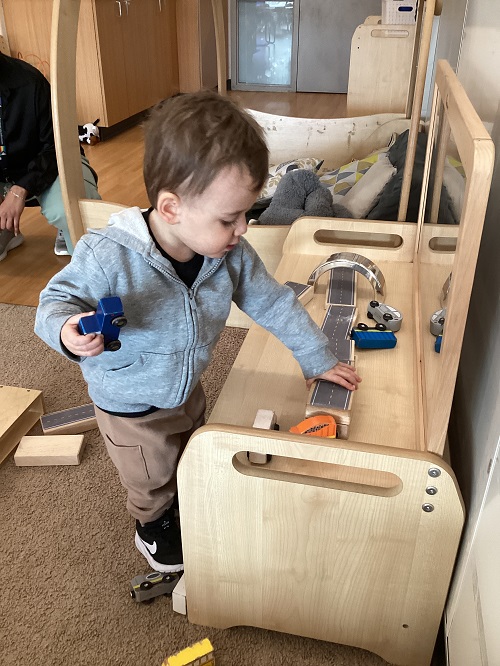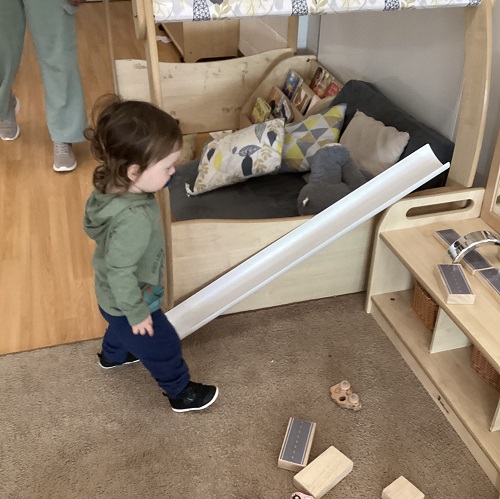Recently, the toddlers have shown a growing interest in ramps as they often ask us for the car ramp to drive their vehicles on. To further explore this interest, the children were invited to build and test their own ramps using various materials like flat wooden blocks of different sizes and lengths, half-pipes, and cushions to prop things up. The first child to approach the activity quickly discovered that they could carry the half-pipes to different spots around the classroom and prop it up against surfaces of various heights. It didn’t take long for many of the other toddlers to notice this and give it a try too. They all spent time experimenting with where they could place the pipes, exercising their gross motor muscles and coordination. During this experience, the toddlers engaged in a mix of both cooperative and parallel play. For example: three children collaborated while setting up a car collection system. The first child worked on positioning the half pipe in place, then another added a collection basket at the bottom of the pipe, and finally a third child was the test runner and sent the first car down the ramp. Everyone watched excitedly and cheered as the car landed in the basket. While some chose to build together, others decided to try their own approaches. Someone contributed by adding a big car into the mix and used our foam cushions to prop up some big wooden blocks. With the smaller wooden blocks, a different child learned that they could stack a few on top of each other and then prop a long flat block up against the stack to create a ramp.
This activity sparked many opportunities for the children to engage in some trial-and-error, problem-solving, and critical thinking about how and where to position materials to build a functioning ramp. I wonder how else the toddlers could expand their knowledge on this topic of interest. What might they do if these same materials were provided in an outdoor setting with natural structures like sand, tree stumps, and snow hills?
